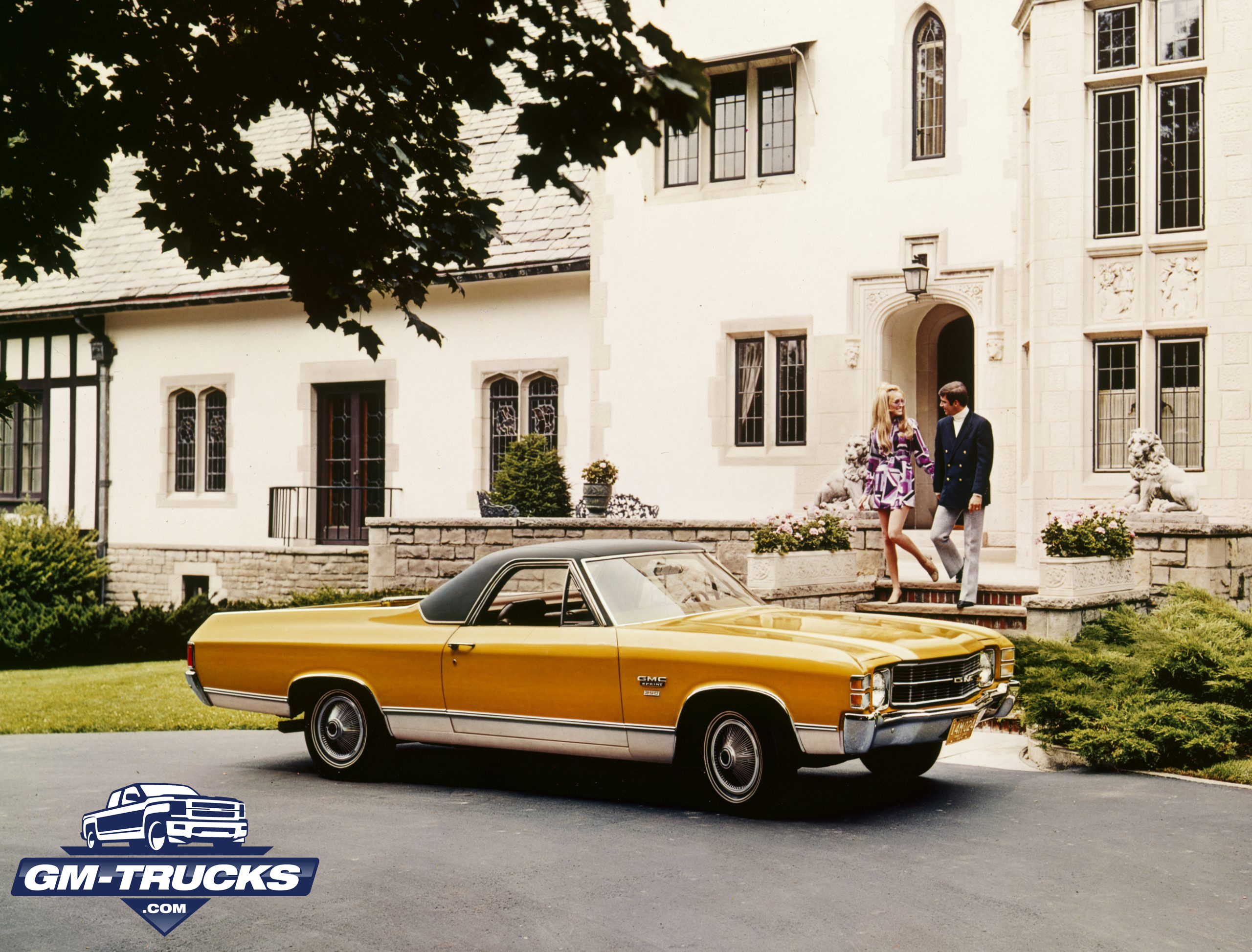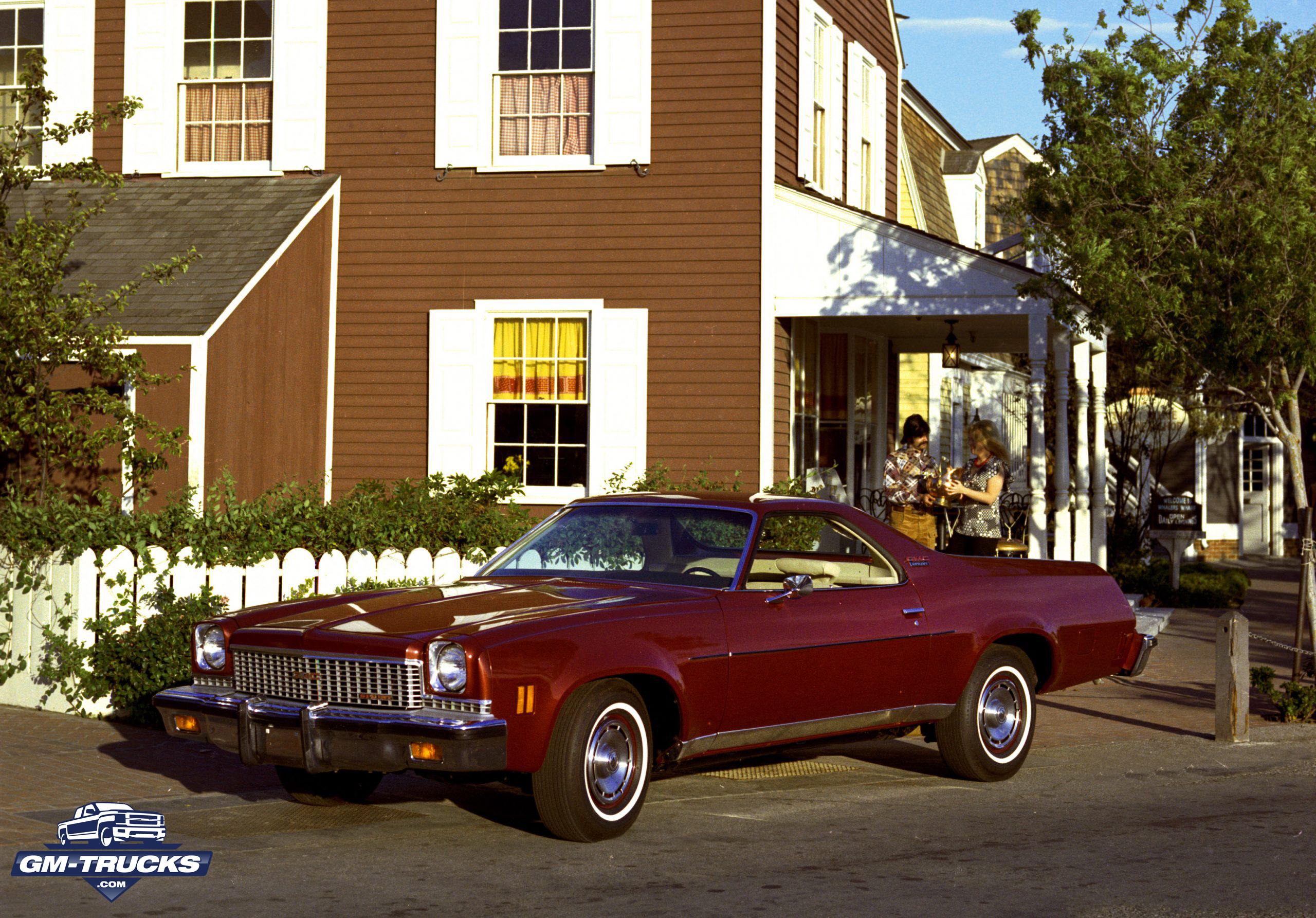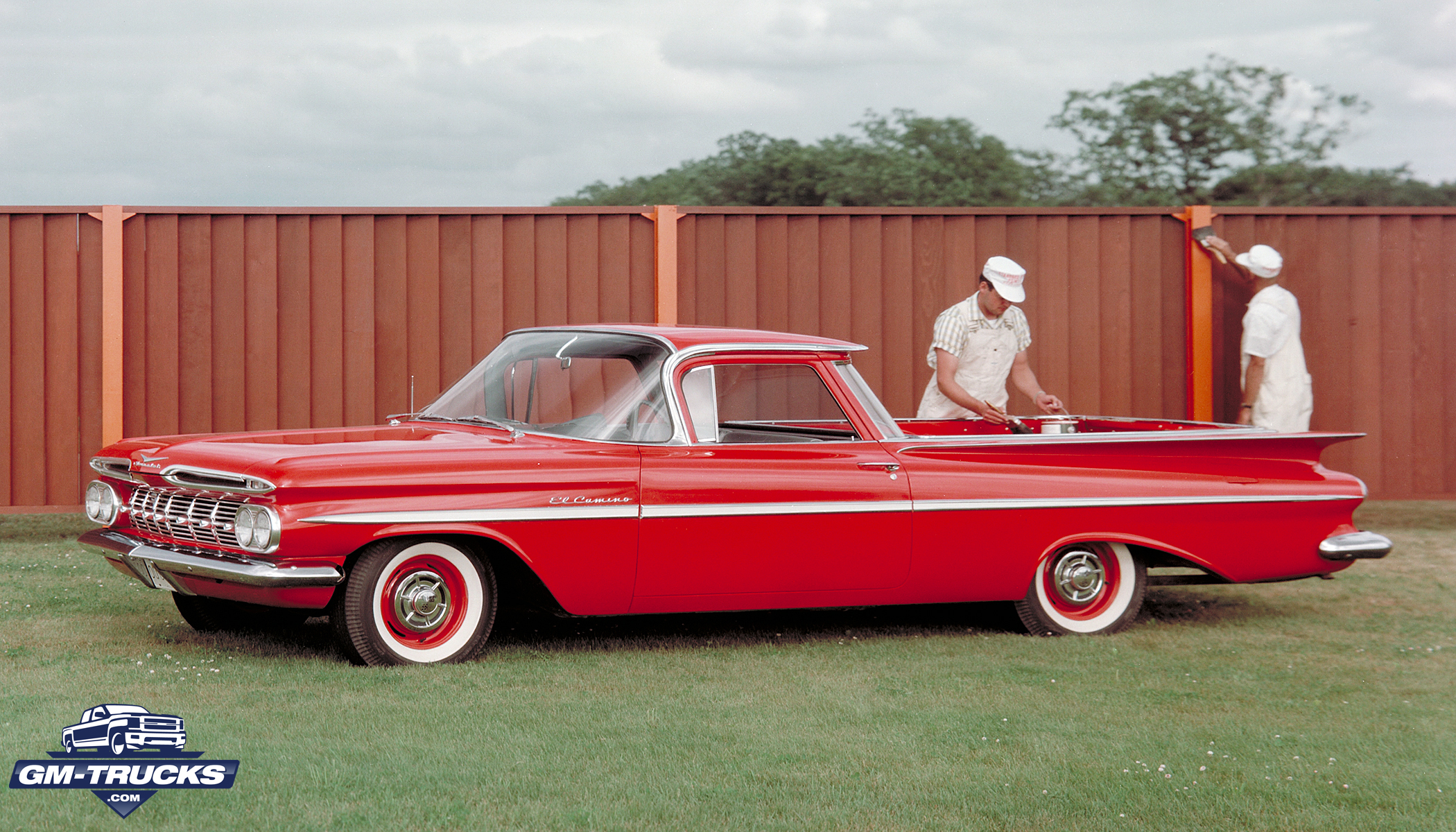Everyone knows about the El Camino. You don’t have to be an automotive enthusiast to recognize the long, low profile of Chevy’s light-duty pickup. In the United States, at least, it’s nearly as distinctive as Volkswagen’s Beetle or Chrysler’s PT Cruiser. (That the El Camino hasn’t inspired its own rules for permissible backseat attacks is some kind of miracle: El Camino elbow—no elbow-backs!)

But while Beetles and PT Cruisers remain happily singular, the El Camino is not truly unique for its body style, not even for General Motors, not even in the United States. In fact, GMC had its own version of Chevy’s popular ute, and neither was GM’s first.
The El Camino – Where It Started
In Australia, famously the land of the ute, GM offered coupe utility bodywork as early as 1934. Between GM and Holden, its Australian division, the General has produced coupe utilities down under consistently since 1946, beginning with a coupe-utility version of the Chevrolet Stylemaster, which was only offered as a sedan in the U.S.
Of course, the concept of a car-based pickup was not totally unprecedented in America. In the early days of the automobile, when consumers could still buy a body and a chassis separately, plenty of cars were offered with longer beds. But the true coupe utility didn’t really hit the U.S. market until the Ford Ranchero debuted in 1957.

Chevy’s state-side ute was born as a response to the Ranchero’s success. Now that the 1955-57 Cameo had proved the viability of a more luxurious, more car-like truck, Chevy was poised to get a piece of the ute action. The El Camino debuted in the 1959 model year. Based on the new Brookwood two-door wagon, it paired the Bel-Air’s exterior styling with the Biscayne’s interior.
The 1959 Chevrolet Truck Engineering sales brochure declared that the El Camino embodied “all desirable qualities of truck utility, passenger car styling, and roadability.” The American public seemed to agree, at least at first: the El Camino outsold Ford’s Ranchero for the 1959 model year. In 1960, however, orders fell, perhaps because the barely-updated 1960 El Camino couldn’t compete with the buzz over the Ranchero’s new Falcon base.
The El Camino got another shot in 1964, this time as part of the brand new Chevelle line-up. It was much more successful in an evolving American auto market which also saw the emergence of the AMC Rambler and Ford Fairlane. A Super Sport version was introduced for the longer-bodied third generation starting in 1968, and GMC got in on the fun soon after.

The Sprint joined the General Motors ute family in 1971 as the badge-engineered GMC version of the El Camino. The twin trucks finished out the El Camino’s third generation together and were then updated with the redesign of GM’s A-body for 1973. Both retained their sport versions (SS for the El Camino; SP for the Sprint) even as Chevelle’s was dropped.
A New Chassis & The Caballero

In 1978, the General Motors coupe utility got its very own chassis for the first time, and the Sprint was renamed Caballero. Meaning “knight,” the new branding of the higher-end sibling built on the El Camino’s reference to the Camino Real, or King’s Road. (The El Camino was now in its fifth generation and retained its iconic name.) The El Camino/Caballero line was switched to the G-body for the 1982 model year and was retired with little fanfare in 1987.

While the El Camino generally sold well to the end, the Caballero did not enjoy such success. In part because there was very little to differentiate it from the fifth-generation “Elky,” the Caballero was not well known: many people were unaware that GMC was still making a North American ute at all. Only about 10,000 Caballeros were sold annually to the El Camino’s 50,000.
The GMC ute’s story has a happy ending, though: its low popularity in its own time stands to make it the king of vintage trucks in the RADWood age. Never exactly commonplace, the GMC version of the El Camino is today far rarer than its Chevy sibling. It’s especially difficult to find in original condition, since of those that did sell, many were bought by hot-rodders and subsequently modified.
The one-generation Caballero is particularly rare, and the variations in the offered trim levels made each distinct version even less common. The sporty Diablo package, for example, only came with a flame demon graphic reminiscent of the Trans Am’s “screaming chicken” for the first few years. A similar graphic depicting two flame dragons astride a shield was included in the El Camino’s analogous Black Knight (1978) and Royal Knight (1979-81) packages, and although the Diablo lasted the full generation, the graphic was dropped across the board when the El Camino Royal Knight was discontinued. Aftermarket graphics packages are a hot topic on fan forums, where Caballero badges are one of the most requested items.

The Laredo decal, which signified the Caballero’s more luxurious trim and corresponded to the El Camino’s Conquista, likewise had a short run and is today highly sought-after. It was offered only from 1978-80 before it was renamed Amarillo for ’81 (perhaps because Jeep had started using the Laredo name).
It would take a lot of luck these days to track down a truly original Caballero. Find a sporty Diablo with the original flame graphic or a luxurious Laredo, and you’re likely to own the field at any enthusiast gathering, even as the uninitiated dole out their erroneous El Camino elbows.

Read More On Wikipedia
Chevrolet El Camino
GMC Sprint / Caballero

